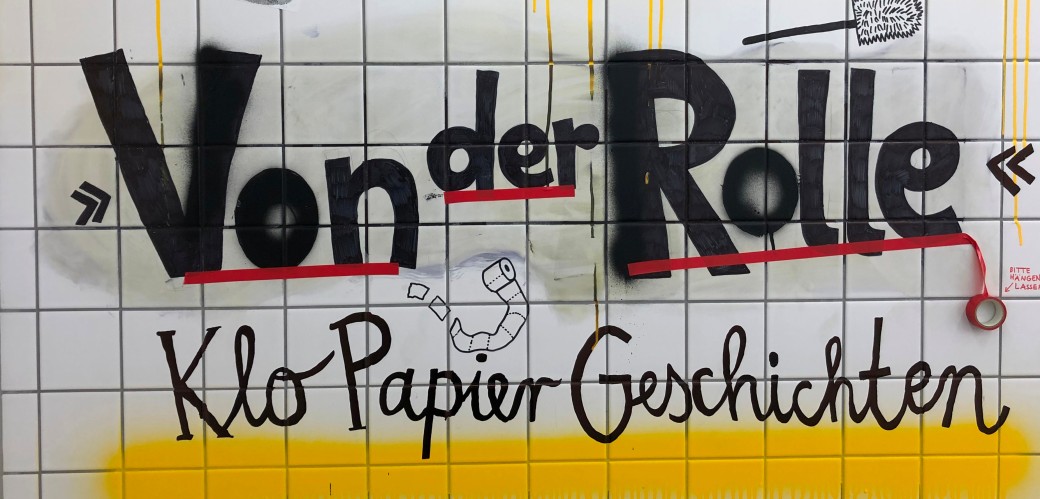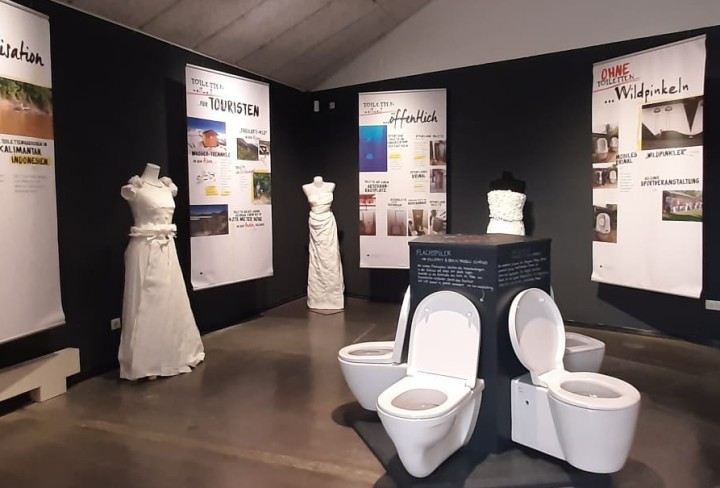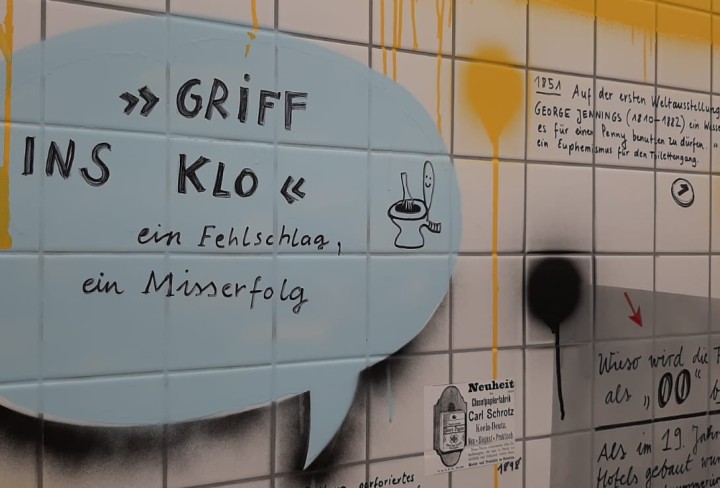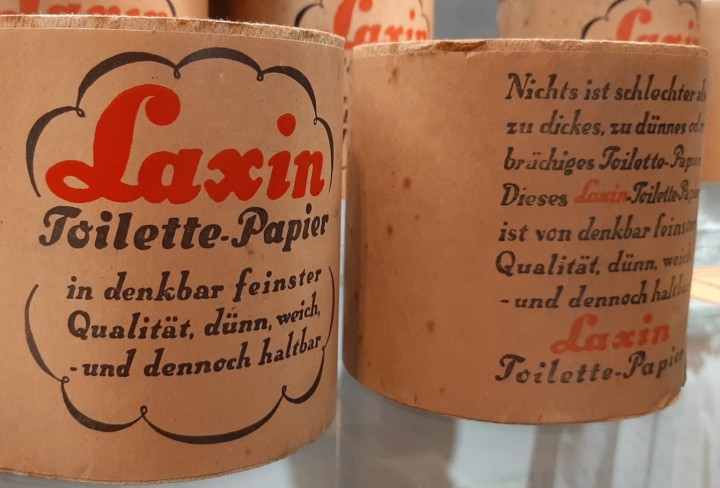

Accompany us to the toilet! In the exhibition room with its white tiled walls and a lot of “loo graffiti” the visitor learns interesting facts about the history of the “smallest room”, the attitude towards hygiene papers and some unspeakable things about the loo. The exhibition was developed in co-operation with the LWL Open Air Museum in Detmold, the Westfälisches Landesmuseum für Alltagskultur (Westphalian State Museum for Culture of Everyday Life).

We venture a look over the edge of the bowl. Sitting on modern designer WCs the visitors look at toilets from around the world. Private or public, in the countryside or in towns, in Germany, Europe or in remote places in the desert, the jungle and in the mountains – toilets look very different but all serve the same purpose.
The trip to the toilet is intimate and, at the same time, a daily occurrence. Our current standard with a separate ventilated room for a toilet with a water-flush is not very old. Many people still remember going across the courtyard, the emptying of the cesspit or the newspaper which lay next to the toilet cut up as “substitute toilet paper”.

Right up until the late 19th century many people did not have a toilet. In rural areas the people went to the barn, the dung pile or in the bushes to relieve themselves. In the towns, monasteries or castles there were often privies in bays in the outer walls. During the course of the 19th century latrines became more widespread even on small farms or in craftsmen’s houses. In order to avoid the trip to the latrine during the night it was usual to have chamber pots in the bedrooms even as early as the Middle Ages. These were sometimes concealed in a chair or commode.
In the early 20th century water closets were already familiar; they were offered in catalogues for sanitary goods for example. Frequently, however, the necessary infrastructure was not yet available: Connection to fresh running water and to the sewage canalisation did not materialise until after the Second World War in many small towns and villages. Toilets without a water-flush - referred to in the vernacular as “pit toilets” – were still usual in many rural and small urban areas even after the mid-20th century. Older latrines were often modernised by replacing the wooden boxes with closet bowls with a proper seat but without a flush. Bathrooms and WC – the abbreviation for “water closet” - did not find their way into all households everywhere until the 1960s/1970s.

Since paper has been produced industrially and therefore cheaply, it has become an important helper for personal hygiene and in the household because it can be thrown away after a single use. The first toilet paper came on to the market in the USA in 1857. In Germany production began around 1880 and right from the start it was either in rolls with perforation to tear off or as individual sheets. The paper industry address book lists 18 producers of toilet paper in Germany in 1929. Hans Klenk, company founder and eponym of the Hakle products – introduced toilet paper on a roll with a specific number of sheets on to the market in 1928 - “1000 tear-offs guaranteed”. In 1958 the company for the first time produced the softer tissue paper. Up until then toilet paper had been made of hard, rough crepe paper.
The production of toilet paper and hygiene papers continues to grow. In 2017 each German used 15 kilogrammes of toilet paper a year. It is by far the most important hygiene paper product; added to that are handkerchiefs, serviettes, kitchen paper, paper towels and other small everyday helpers.
Duration:
1.3.2020 to 5.9.2021
Opening hours:
Tuesday – Friday: 10 – 17 hours
Saturday and Sunday: 11 – 18 hours
Entrance:
3,50 €, reduced 3,00 €
Visitor informtion:
kulturinfo-rheinland
Tel: 02234 9921-555
Fax: 02234 9921-300
Email: info@kulturinfo-rheinland.de
Exhibition location:
LVR-Industriemuseum
Papiermühle Alte Dombach
Alte Dombach
51465 Bergisch Gladbach